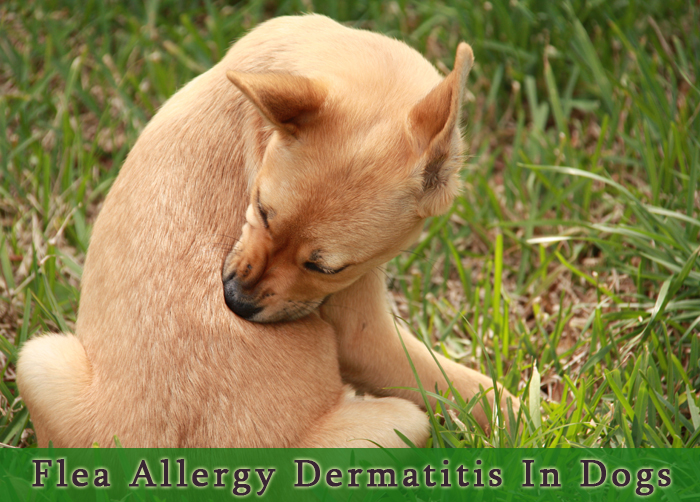Fleas are exoparasites that live on the body of furry animals, including dogs and cats. They feed on the host’s blood and are most active during the warm summer season. They pierce their mouth in the animal’s body and stay there for a few days. No wonder they irritate the pet through their painful bites but also cause diseases, which can be fatal if not treated in the first place. Thus, fleas are the main cause of Flea Allergy Dermatitis and many other diseases in dogs.
What are the symptoms of Flea Allergy Dermatitis in dogs?
Pets that show hypersensitivity towards flea saliva develop bumps on the spots of fleabite. They start losing their fur in that particular area. They also scratch, itch and bite this area to get rid of irritation. Body parts that are susceptible to flea allergy dermatitis in dogs are neck, tail, lower back and back of the legs. Curing this eczematous skin disease is through the treatment for fleas. By nailing down these insects, pet parents can stop worsening of the condition.
Causes and Concerns:
Fleas are the foremost cause of this allergy in dogs. Veterinarians proclaim that one out of every five animals suffer from Flea Allergy Dermatitis. According to them two fleabites a month are enough to continue this allergic disease and to form hot spots on the dog’s body. In addition, the diseases spread from the spot of fleabite to the surrounding portion and covers a huge part of the dog’s body. This is very painful and demands instant treatment.
Treatments:
Prevention is the best treatment for fleas in dogs. Flea Allergy Dermatitis can be kept at bay by preventing fleas. Pet parents can actually avert this unwelcome situation by choosing the correct product from a wide range of flea treatments. Topical and oral treatments are a quick fix solution that kills fleas within few hours. They are also the finest preventives as they destroy the flea life cycle. Shampoos, Dips and collars are other very effective flea treatments.
Prevention:
Preventing fleas is as important as treating existing fleas. Most of the spot-on flea treatments have preventive property, which makes them complete flea treatments for dogs. Oral medications are also effective in keeping fleas at a distance. Pet owners must eliminate flea infestation from their homes, gardens, yards as fleas lay their eggs on the pet’s beddings. Flea larvae are found in the environment and not on the dog’s body. Thus, by averting fleas and maintaining good hygiene, one can actually rule out Flea Allergy Dermatitis in dogs.
Flea control:
In addition to using chemical flea treatments for dogs, some precautions and daily care measures will also help to control fleas on dogs.
- Comb your pet’s body with a flea comb. This should be done on a daily basis to get rid of fleas as well as flea dirt. Flea dirt also causes FAD and must be removed from the pet’s body. Flea dirt is actually flea feces that initiates and aggravates skin allergy.
- Bathe your pet frequently to ascertain a cooling skin condition. It eases off skin irritation and reduces itching. Moreover, clean and neat pets are less attractive for fleas.
- Along with chemical products, keep a habit of using natural products so that the pet’s skin and coat are replenished regularly.
Thus, an absolute approach towards flea elimination, prevention and control is important for treating Flea Allergy Dermatitis. This way, one can keep a check on the flea population and reduce it to a considerable extent. Thus, the last piece of advice for all you pet parents is just get rid of fleas and say good-bye to Flea Allergy Dermatitis.
Want to eliminate fleas from your dogs? Find best product for flea and tick at our online store: www.budgetpetcare.com

